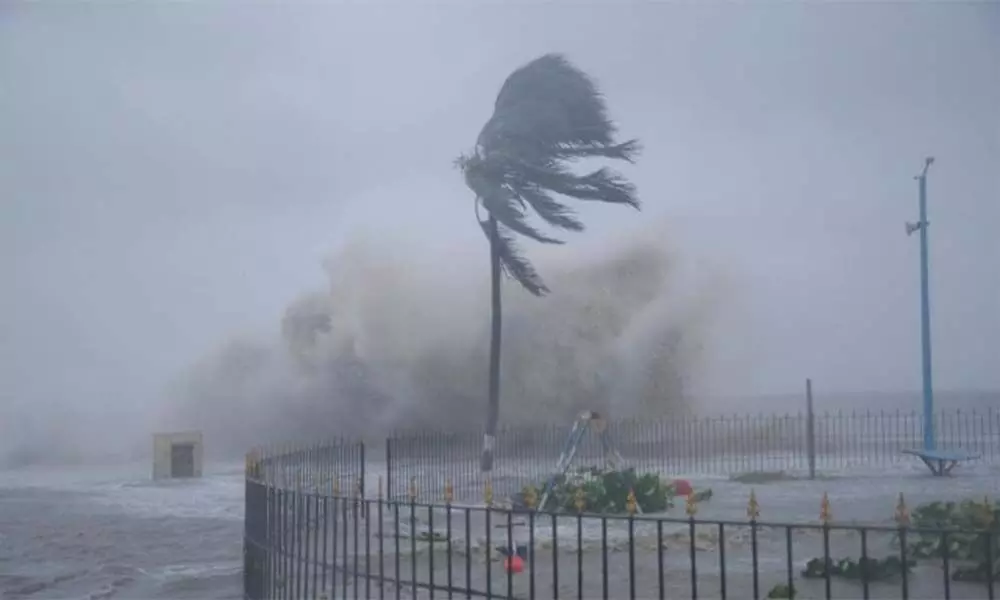Live
- One-man panel to visit three districts from Dec 27
- Monitor investments, creation of jobs: CS
- Hyderabad: City-based Karaoke group feted by Rafi family
- Rachakonda sees uptick in murders, kidnappings; overall crime rate rises
- Hyderabad: Police bust drug racket, three land behind bars
- HC extends Sengar’s interim bail till Jan 20
- Foundation stone laid for drinking water pipeline
- Hyderabad: Fake tea powder unit busted, stocks worth Rs 1.2L seized
- Mastermind of kidnapping gang targeting celebrities arrested
- Khanapur: Temples celebrate their anniversaries grandly
Just In
Number of Indian districts affected by cyclones tripled after 2005


More than 75 percent of Indian districts are hotspots for extreme climate events. On the east coast, more than 90 per cent of districts are hotspots for cyclones, floods, droughts and their associated events; these districts are home to over 250 million people.
New Delhi : More than 75 percent of Indian districts are hotspots for extreme climate events. On the east coast, more than 90 per cent of districts are hotspots for cyclones, floods, droughts and their associated events; these districts are home to over 250 million people.
On the back of recent cyclone, Yaas hitting the eastern coast, Council on Energy, Environment and Water (CEEW) has done an independent analysis in West Bengal and Odisha.
According to a CEEW study, after 2005, the yearly average of the number of districts in India affected by cyclones tripled and the cyclone frequency doubled. In the last decade alone, 258 districts were affected.
The cyclone hotspot districts are primarily concentrated along the eastern coast. These include Baleswar, East Godavari, Howrah, Kendrapara, Nellore, North 24 Parganas, Paschim Medinipur, Puri, Sivaganga, Tuticorin, and West Godavari.
In east coast districts, the frequency of cyclones and storm surges has increased seven-fold in the last 50 years. Since 2005, the number of districts affected has increased five-fold on a decadal basis.
As per the study, on the east coast, there has been a 20-fold increase in associated cyclone events such as storm surges, heavy rainfall, floods, and thunderstorms. Further, while east coast cyclones once tended to occur more frequently in the post-monsoon season compared with the pre-monsoon season, there has been a reversal in this pattern in the last decade.
More than half of the cyclone hotspot districts on the east coast are witnessing drought or drought-like conditions. The east coast's warming regional microclimate - driven by factors like land use change and the deterioration of natural ecosystems - has led to intensified cyclonic activity in the Bay of Bengal in both the pre-monsoon and post-monsoon seasons.
The study said flood frequency has increased fifteen-fold in east coast states. The number of districts affected has increased thirteen times, exposing more than 81 million people. Flood hotspots on the east coast include Bankura, Chennai, Cuttack, East Godavari, Jagatsinghpur, and Visakhapatnam.
While the east coast has traditionally been more prone to cyclones and floods, droughts have increased seven-fold in recent decades. Drought hotspots in east coast states include Anantapur, Angul, Baleswar, Bankura, Coimbatore, Kanchipuram, Kandhamal, Madurai, Nalgonda, Prakasam, Purulia, Sundargarh, and Tirupur.

© 2024 Hyderabad Media House Limited/The Hans India. All rights reserved. Powered by hocalwire.com






